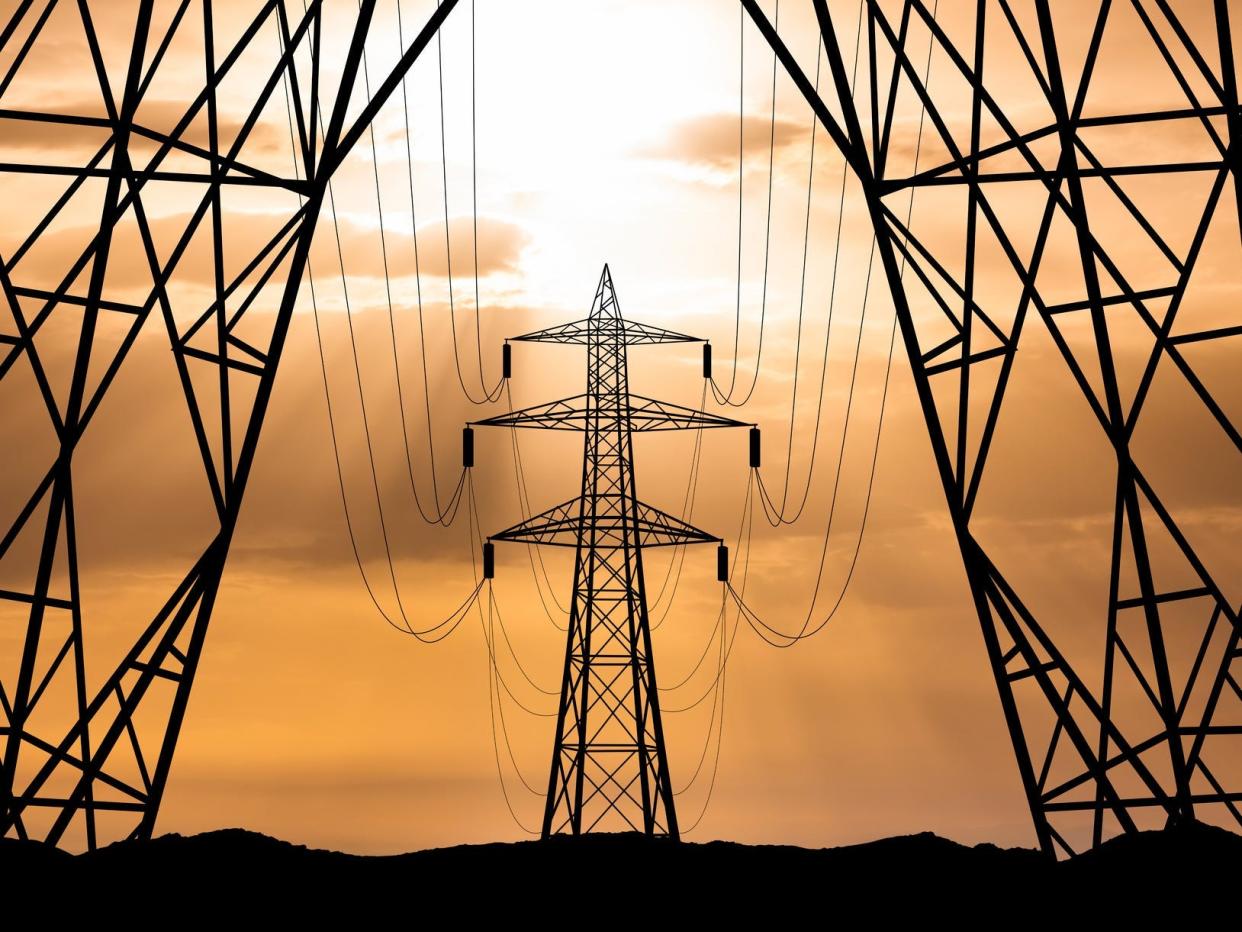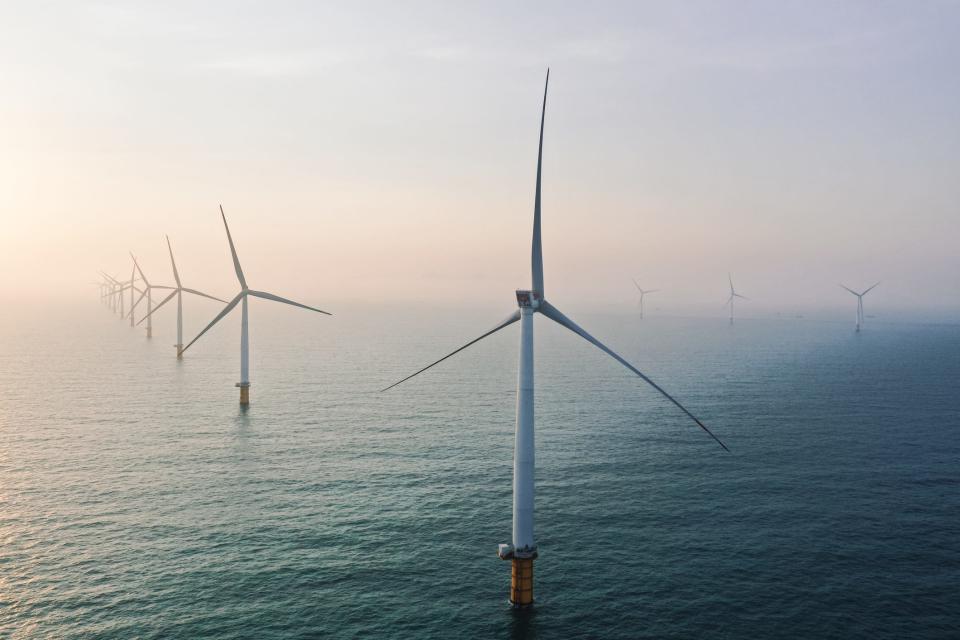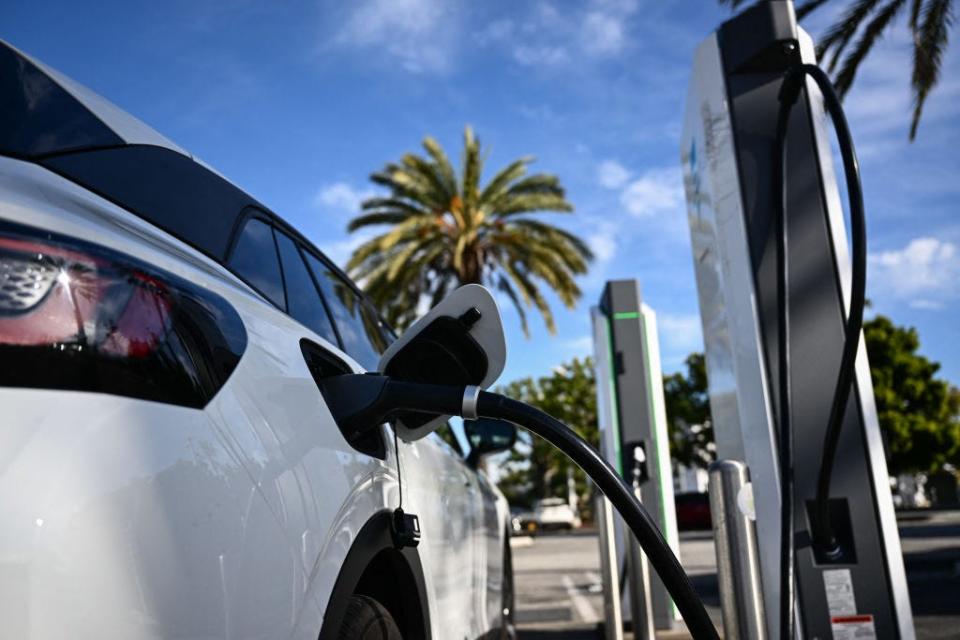What it will take to modernize the American grid and usher in the clean-energy revolution

Renewables can offer cheaper energy than fossil fuels, but the grid isn't designed to handle them.
We explore the places in the US making progress on this front.
This article is part of "Transforming Business: Infrastructure," a series exploring the advancements reshaping US infrastructure.
Think about the last time your power went out.
Maybe a car hit an electricity-distribution pole or a falling branch took down a power line during a storm. It probably took at least a few minutes, maybe hours, before your power turned back on.
Most likely, that's because workers at your local utility first had to assess how to restore your power. Then dispatchers had to drive to the nearby switches that control the flow of energy and manually flip them until everyone's lights were back on.
Not in Chattanooga, Tennessee. Instead, software automatically sends commands to smart switches throughout the system, rerouting the flow of electricity to restore power in seconds.
The electric utility in Chattanooga, EPB, has invested $280 million in creating one of the smartest power grids in the country. It has this self-healing system and manages energy more efficiently than traditional grids, reduces carbon emissions, and saves customers money on their electricity bills.
"They are an example of people who are looking forward to say: We see technology coming," Kevin Schneider, the chief engineer studying power systems at the Pacific Northwest National Laboratory, told Business Insider. "It is a challenge. It will be expensive, but we view it as less expensive and less challenging than doing nothing for the next 10 years and then trying to catch up."
Nationwide, our power systems are in trouble. The infrastructure is aging and outdated, costing consumers billions a year in higher energy bills. Moreover, the aging grid is not ready for the barrage of increasingly severe weather that the climate crisis is bringing, nor the incoming surge of renewable energy and battery storage as the US moves toward the Biden-Harris administration's goal to achieve a carbon-pollution-free grid by 2035.
"Much of our grid infrastructure is 40, 50, 60-plus years old," Joe Rand, an energy policy researcher at Lawrence Berkeley National Laboratory, told BI. "And so it is in need of upgrading and maintenance."
Smarter grids, like Chattanooga's, are just part of what it will take to modernize the American grid in the coming decades. They can deliver electricity in a "cleaner, more efficient, faster way," Joshua Rhodes, a research scientist studying smart grids at the University of Texas at Austin, told BI.
However, getting that electricity in the first place from wind, solar, and other renewables is where the challenge begins.
A troubled transition to renewable energy

Last year was record-breaking for clean energy in the US. Renewables, including wind, solar, and hydropower, represented about 25% of the electricity generated in the US in the first half of 2023.
And this year is off to a solid start. South Fork Wind — New York's first offshore wind farm — began powering homes in March. And the Edwards & Sanborn project, the US's largest solar energy and energy storage project in California, came online in January.
Renewable energy is not only cleaner than fossil fuels but also often less expensive.
"In many parts of the United States, wind and or solar are basically the cheapest ways that we can generate electricity," Rand said.
But we have a long way to go to reach 100% clean electricity by 2035. Renewables are intermittent energy sources. Unlike fossil fuels, the amount of energy they generate fluctuates. But our grid system wasn't designed to handle that variation.
Plugging intermittent energy sources into this outdated grid network can cause problems, such as energy imbalances that exceed capacity and trigger outages, Philip Odonkor, an assistant professor in the School of Systems and Enterprises at Stevens Institute of Technology, told BI.
So what's happened is a bottleneck: Renewable projects are generating energy but with limited ways of getting it to towns and cities. At the end of 2023, 930 gigawatts of power — enough to power roughly 171 million homes — were waiting to connect to the grid.
To achieve zero-emissions electricity by 2035, the US needs to revamp the grid with up to 10,100 miles of new transmission lines that can transport renewable energy from point A to point B. The Midwest grid operator, Midcontinent Independent System Operator, has approved the country's largest transmission investment to date, totaling $10.3 billion, to improve how it delivers electricity to 45 million people across the Midwest.
But in general, construction on new high-voltage transmission has slowed to a trickle over the past decade, Rand said. In 2013, the US completed over 3,000 miles of transmission projects. Last year, it completed 251 miles.
It's not economic or technology barriers holding these projects back, Rand said: "It's institutional, regulatory, and social issues."
Breaking down barriers

When South Fork Wind began operations in March, it was a major milestone but also years behind schedule. Economic headwinds struck in 2020 with the Trump administration's moratorium on offshore wind, which stalled progress for two years.
"The clearest delay for South Fork was losing those years of progress," said Julia Bovey, the director of external affairs for offshore wind at Eversource Energy, which co-owns South Fork Wind with Ørsted.
Other obstacles stand in the way of clean energy — the biggest being the lengthy permitting process and interconnection queue delays. The permitting process for renewable-energy projects involves massive amounts of paperwork and can take three or more years to finish.
In the end, about 80% don't make it to completion, and those that do can get stuck in the clogged interconnection queue for as long as five more years. By the end of 2023, almost 12,000 projects were in the queue, waiting to be connected to the grid.
"It's a seriously complex process with so many stakeholders," Bovey said.
South Fork Wind was the first utility-scale offshore-wind project in the US to make it through this process. In doing so, it revealed a lot of issues that could be fixed through standardization and better agency coordination, Bovey said. But it also proved that bringing offshore wind online was possible.
"Every hope is that this has paved the way for future projects to be cheaper, bigger, faster, and just as responsible — just as well sited," Bovey said.
On the whole, Paul Denholm, a principal analyst and senior research fellow at the National Renewable Energy Laboratory, is more skeptical of the country's prospects. We'll be closer to a 50% renewable-power grid by 2035 with the way things are going, he told BI.
Right now, we lack the federal policy necessary to solve regulatory and permitting delays, clear the interconnection queue, and drive rapid infrastructure upgrades and technology implementation, Denholm said.
For example, the Midcontinent Independent System Operator's transmission investment, while noteworthy, took 11 years to get approval, and its next series of approvals have been delayed.
"So from that standpoint, it's pretty clear that we're not on a path to get to 100%," Denholm said.
There's no going back

Regardless of how quickly the US gets there, we're headed for a clean-energy revolution. The federal government has invested nearly $100 billion in clean energy through its Bipartisan Infrastructure Law and the Inflation Reduction Act.
Old infrastructure must be modernized across the country because the production and use of energy are going to get much more complicated.
Nationwide, the grid draws power from about 12,000 power plants. Over the next 20 years or so, it will have to balloon to incorporate millions of small, distributed energy-generation resources, from hydropower dams to offshore wind farms to rooftop solar panels.
Then there will be the batteries, which store wind and solar energy until a rainy day. Meanwhile, newly electrified cars and heating systems will increase energy demand.
Eventually, home appliances may tap into data from the grid — how much people are drawing energy from it, how much carbon it's emitting, and how much electricity costs at any given hour — to help you make smart decisions about when to wash your dishes or heat your house.
"Historically it was meant to go one way," Schneider said of the grid. "Now we've got solar that pushes power back in. We've got EVs. We've got new loads like heat pumps. So the edge is getting so much more complicated with a lot more stakeholders in there."
Smart grids are essential for integrating all that new stuff. The rollout of smart-grid technologies, renewable projects, and new transmission lines will happen piecemeal across the country, at different paces in different places, depending on policies, utility finances, and the economy — high up-front costs can be a major deterrent. However, the return on investment can be even greater.
Take Chattanooga. EPB spent $280 million to refurbish its power system with smart technologies. In its first 10 years, the project generated $2.7 billion worth of economic value by creating jobs, attracting businesses, and reducing customers' electricity bills, an EPB-funded study found.
MISO foresees a similar return on its $10.3 billion investment. It estimates that investment will bring $37.3 billion of value for customers by transporting cheaper, more reliable power. So the benefits can outweigh the cost.
"As we move forward, things are becoming more complex," Schneider said. "And we need to find ways to work together collaboratively. Because no one group or organization has all the answers, it's going to be a lot of different things coming together."
Read the original article on Business Insider

